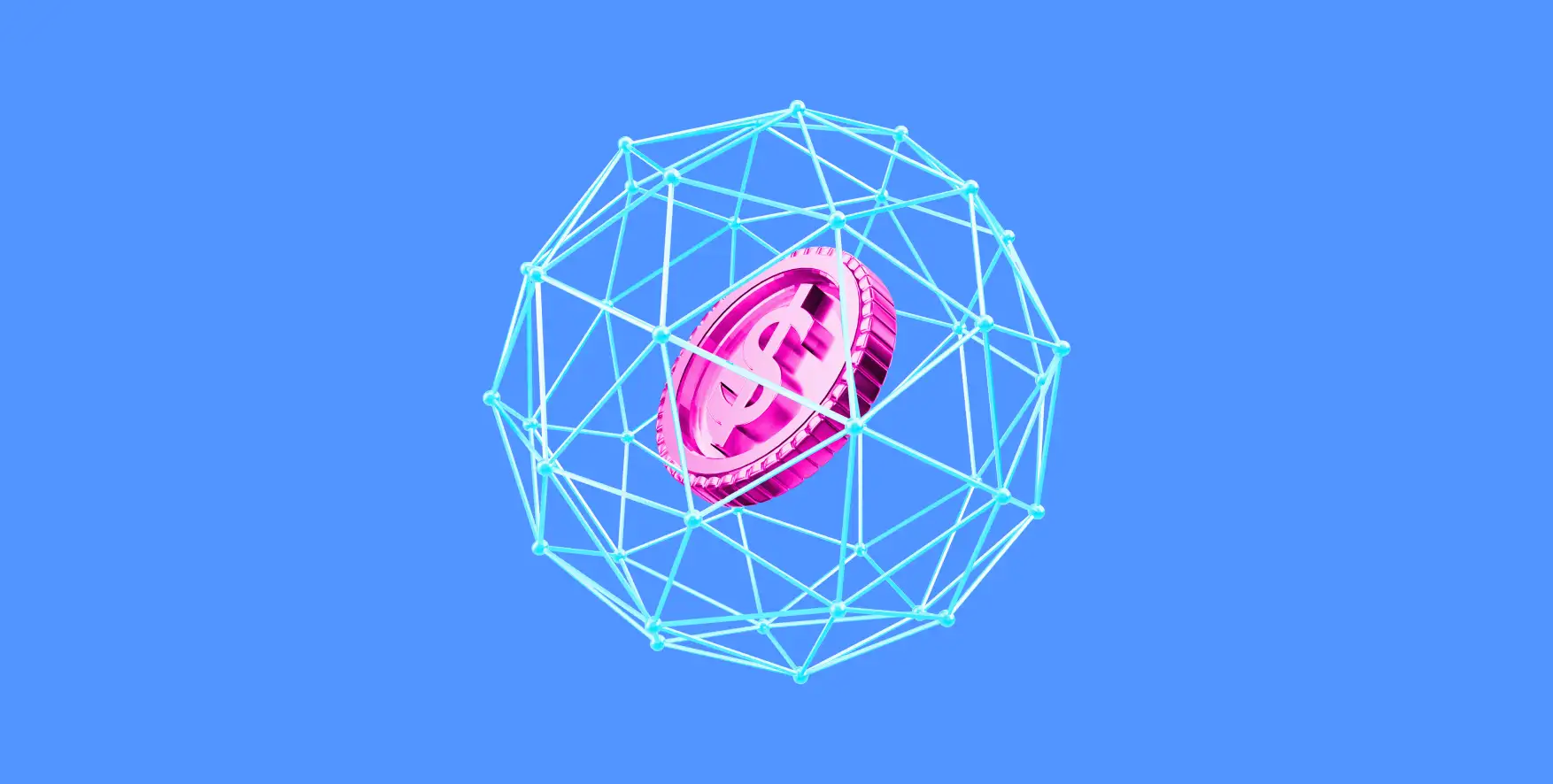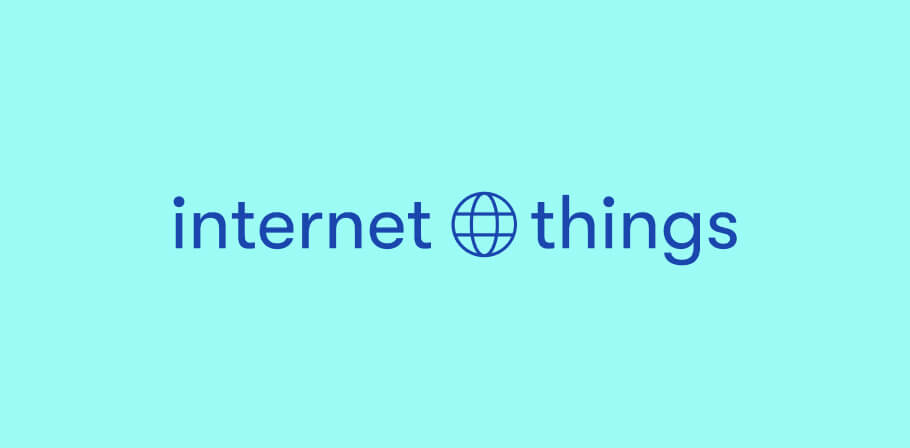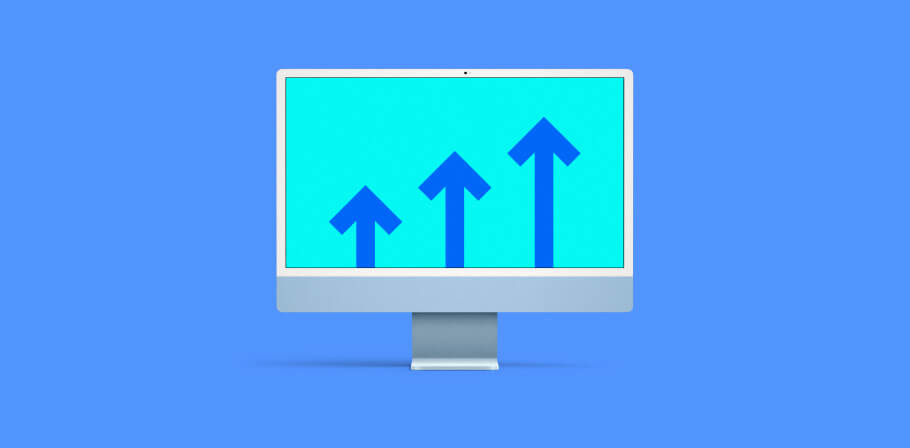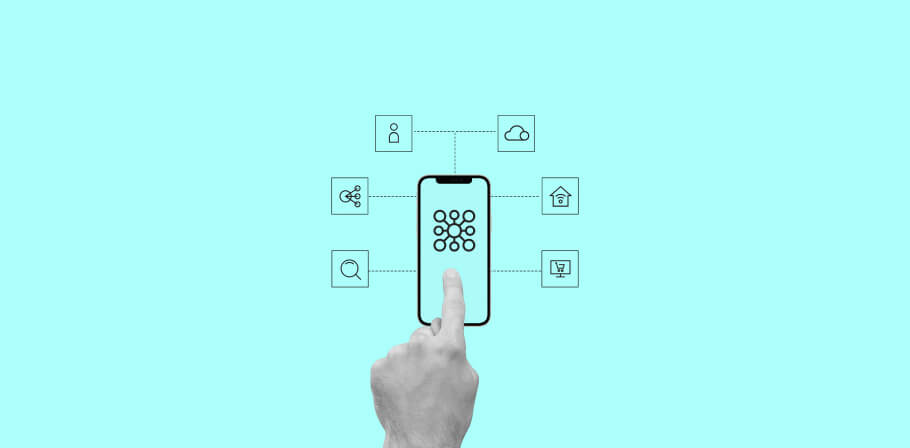IoT in banking is poised to transform the financial industry. Smart devices are now a standard part of daily life — that widespread adoption impacts how everyone manages their money (think of how much mobile banking you do on your smartphone).
We all want seamless and simple digital services now, so financial institutions are heavily investing in the new frontier of IoT. Experts even estimate a massive compound annual growth rate of 11.54% between 2024 and 2028 for the smart finance market. Such expansion is sure to introduce entirely new approaches to banking.
So how does that affect you and any financial industry player? To help you prepare for the future of smart finance, let's explore everything you need to know about IoT.
What is IoT in banking?
IoT in banking refers to a network of connected devices that collect data for banking services. By nature, devices and sensors maintain close proximity to the end user (think of a smartphone, digital doorbells, fitness watches, etc). That means IoT tech has a unique ability to track human activity in a variety of environments. Connected objects can assess real-time behavior for accurate, context-specific data collection.
Consider a fitness watch. The device senses numerous aspects of your physical body (heart rate, blood pressure, temperatures). As you exercise, sensors convert your real-life activity into digital data. And with that data collected, you can then use the information and insights to improve the quality of your workouts.
The modern banking industry uses IoT for the same purpose, just with a focus on banking matters. Financial institutions provide customer-facing services, so any “last mile” or "endpoint" data can provide helpful insights about the consumer banking experience. IoT supports the digital bridge between banks and their human customers.
PARTNER WITH US TO CREATE YOUR IOT PRODUCT
EPAM Startups & SMBs develops top products for the financial services industry. Join the ranks of IoT adopters in banking with us.
How can IoT improve the banking industry?
A network of devices that digitally connects banks to their customers offers financial institutions numerous benefits:
Customer-centricity
First, IoT allows banks to build personalized services. Smart devices directly measure consumer behavior, and that data collected informs banks on customer preference. A bank that understands a customer's wants and needs can offer tailored recommendations for better conversion rates.
For example, banks could collect data on account activity to offer individual insurance plans, investment opportunities, and loan offers. Or consider location-based services, where banks can send relevant information based on the region each consumer occupies. Think about how a single smartphone creates numerous customer touchpoints (website chats, phone calls, email, SMS, in-app alerts, social media channels, online banking applications) for better mobile banking service.
The result is an overall improvement in the digital banking customer experience (CX). And good CX scores pay dividends — customers are six times more likely to remain with a bank than dissatisfied customers. That's in addition to a 75 percentage point difference in total shareholder return between CX leaders and CX laggards.
Operation efficiency
Second, IoT supports far greater optimization of business resources. IoT devices interact with the surrounding banking environment to expedite operations. Finance IoT tools perform basic maintenance tasks that usually include extensive human labor.
For example, sensors can track when an ATM's cash float is low and request servicing. Other gadgets can track when branch equipment fails and send out maintenance requests. These tasks occur without human effort. Some smart cameras can even measure employee and customer foot traffic to improve staff schedules and the physical branch layout.
As a result, an IoT bank becomes more efficient compared to those who use traditional banking methods. Digital tools manage the mundane tasks, which helps lower costs and improve productivity. The consumer also benefits, as IoT devices introduce convenience and service automation into their daily lives (e.g. operating a smartphone for account updates rather than using an entire afternoon to drive to a physical bank branch). IoT is reconfiguring banking technology for better efficiency and financial benefits.
Improved security
Third, IoT solutions enhance bank security postures. Consumer devices are network end-points that are vulnerable to cyber threats. But by connecting each device to a secure, IoT-enabled communication network, banks can better protect sensitive customer data.
For example, new biometrics on your phone improve the security of your digital bank account and contactless payments. And continuous monitoring of all bank application activity can catch instances of fraud on wireless payments. Banking institutions can also easily send out security patches via the network to rapidly fix vulnerabilities against new threats.
Such security resilience is crucial for the financial sector. According to Statista, finance holds the second-highest rate of data breaches. It is also the sector most targeted by basic web application attacks. In response, worldwide companies list end-point security software as the most used security technology with the same investment priority as cloud and employee awareness security techniques. IoT can support much-needed security enhancements.
Data-driven analysis
Fourth, IoT systems allow financial institutions to derive valuable insights from physical banking environments. IoT devices send non-stop real time data from millions of interactions between customers and banks. Such a wealth of information feeds big data analytics in banking and drastically improves decision-making.
For example, IoT finance portfolio analysis offers risk insights that change asset management decisions. Account analysis can measure customer activity to assess creditworthiness better than traditional methods. Even exchange data from financial transaction monitoring can inform management and help predict market trends.
Such data-based decision-making provides obvious company benefits. Recent studies found banks that exploited data-driven decision making (DDDM) earned a productivity increase of about 9–10%. And Mckinsey notes that banking institutions who adopted AI-powered decision-making earn high customer lifetime values, better customer acquisition numbers, and lower operating costs.
Innovation
Lastly, IoT solutions place banks in a favorable position towards digital transformation. Popular services that consumers now expect first require a secure infrastructure. For example, digital wallets and contactless payments only work with mobile devices and viable point-of-sale systems. So those that adopt the IoT infrastructure early position themselves to improve banking services according to what customers want.
Most institutions are well aware of this advantage, and that has propelled smart finance revenues to a lofty 97.3 billion, according to Statista. Experts expect such revenues to increase as banks invest more, reaching a value of 187.30 billion by 2028.
GET THESE IOT BENEFITS WITH EPAM STARTUPS & SMBS
We’re here to guide you on your IoT implementation journey.
Use cases of IoT in banking
In particular, banks are investing in and developing the following IoT use cases:
The Smart Branch
A Smart Branch integrates the latest digital tools and technologies into current physical locations. The purpose is to provide a more interactive and personalized environment for consumers (and by extension, employees). IoT solutions, artificial intelligence, and data each help create an elevated experience.
For example, one of the main bottlenecks in a typical branch is the teller counter. Lines often form, which impedes foot traffic, creates noise, and deter impatient consumers from using the branch at all. But IoT can fix that with some real-time data of customer walk paths. New design layouts from the digital assessment can improve where and how lines form.
In addition, self-service kiosks can also reduce the need for human tellers and decrease lineup size. And interactive welcome displays can guide consumers to segregated teller avenues (e.g. business consumers go one way while all other general inquiries divide between front counters and mobile banking applications). And of course, smart ATMs provide efficient, employee-free cash dispensing to lower wait times.
In short, Smart Branches combine physical design, IoT technology, services, and marketing into a coherent experience. They become “experience hubs” with IoT-supported customer service (much of which is borrowed from the fintech industry). There are even trials where banks included coffee shops in their branches for further improvements in customer impact.
Smart insurance
Traditionally, auto insurance assesses risk with markers like the applicants age or driving record. However, IoT-generated data offer improved risk profiles based on real time information regarding how a person drives. Sensors can capture markers such as historical speed, braking patterns, and car conditions. Real-time driving information vastly improves any representation of risk. As a result, banks and insurers can improve service offerings to clients with a proven history of low-risk driving.
Similar opportunities exist within all advanced insurance strategies related to the banking industry. For example, home insurance can measure smart thermostats, fire alarms, and security systems data. Life, travel, and health insurance can all use collected health indicators from smart watches to assess premiums. The use cases of IoT in financial services and insurance risk profiling are endless.
Connected customer service
IoT represents a bonafide revolution in customer service. Banks can now engage with consumers through a vast array of digital channels. Seamless communication greatly improves customer satisfaction levels and issue resolution times.
For example, IoT financial services can send phone alerts or application notifications with personalized offers. Customers can also use web pages to contact financial advisors without leaving the comfort of their homes. Voice-activated assistants can give bill reminders or confirm the authenticity of the user for high-grade at-home security verification. Lastly, chatbots with natural language processing (NLP) can take on a routine customer interaction while human service reps manage high-priority cases to increase issue resolution efficiency.
Blockchain-based smart contracts
IoT can also integrate well with other novel technologies such as smart contracts. Smart contracts are self-executing terms of agreement deployed on a distributed ledger (known as a blockchain). A blockchain contains a list of transactions. All transactions (even financial transactions) are public and require consensus from the majority of the network. That means if a smart contract meets the predetermined agreement terms, the network confirms the exchange. That final exchange is immutable.
Such a process introduces unparalleled security for digital funds. An automated and immutable public record is impossible to change without consensus. Plus, it maintains trustless execution (in other words, it requires no intermediary that poses a security threat). Such financial transaction transparency, security, and automation has numerous applications for international transactions.
IoT devices can function well with smart contracts. For example, a weather sensor can automatically execute a sliding scale insurance contract once a device measures the presence of snow. And bank applications can measure consumer activity and execute smart contracts for service trials. You could even control physical home locks from your phone based on the execution of an IoT-enabled device with a smart contract rent agreement.
The concept is novel, but the security and speed of any legally binding agreements in the financial sector could change as banks adopt blockchain technology.
What is the future of IoT in the banking sector?
With such viable use cases, the network of IoT technology will expand. If we are to make some predictions, several common trends will likely depict the future trajectory of IoT in banking.
- Expansion: First, expect to see widespread adoption of IoT-enabled devices. Connected cars, advanced smartphones, and other wearable devices will become even more integral to society. That will offer greater opportunity for IoT banking services, whether that means usage-based insurance plans or personalized investment banking solutions.
- Integration: Second, expect IoT technology to connect with other emerging technologies. Artificial intelligence and machine learning can easily optimize connected devices that gather data. Continued use of blockchain technology can support decentralized autonomous organizations (DAOs) and other forms of anonymous peer-to-peer lending. Banking systems will also connect with edge computing innovations for rapid and secure device banking.
- Collaboration: The Smart Finance industry will also build other industry partnerships. The Insurtech and Fintech industry (and their preference for technology integration) will likely capitalize on the benefits of IoT. Fraud detection and cybersecurity firms will also connect with banks to address security concerns. And governments will enforce compliance standards that ensure the ethical use of IoT devices.
How can we help you implement IoT in banking?
While the future of IoT looks bright, IoT development is no simple task. IoT applications require the same building procedures as any app, such as high-quality UX design, frontend development, and testing. There are also the issues of financial data regulations, security considerations, physical and software configurations, and scaling factors. Without proper guidance, you may not achieve a viable return on investment.
That's why hiring development experts can be of support. EPAM Startups & SMBs is a leading IoT app development company, which means we can help you through the entire building process. Regardless of the complexity, programming type, or security level, we can deliver you the high-level IoT app you need. Drive positive customer experience by leveraging the innovations of IoT for banking.
START YOUR IOT INNOVATION NOW
Book a free consultation to talk to our IoT experts.
Conclusion
The future of IoT promises to transform the banking industry. Smart gadgets offer banks novel ways to reach their customers, in addition to the benefits of security and operational efficiency. Use cases for IoT in finance will only grow in volume and application. As consumers demand more digital services, early adopters of IoT will likely gain a competitive edge and greater market share.
FAQ

Anush has a history of planning and executing digital communications strategies with a focus on technology partnerships, tech buying advice for small companies, and remote team collaboration insights. At EPAM Startups & SMBs, Anush works closely with subject matter experts to share first-hand expertise on making software engineering collaboration a success for all parties involved.
Anush has a history of planning and executing digital communications strategies with a focus on technology partnerships, tech buying advice for small companies, and remote team collaboration insights. At EPAM Startups & SMBs, Anush works closely with subject matter experts to share first-hand expertise on making software engineering collaboration a success for all parties involved.
Explore our Editorial Policy to learn more about our standards for content creation.
read more
















